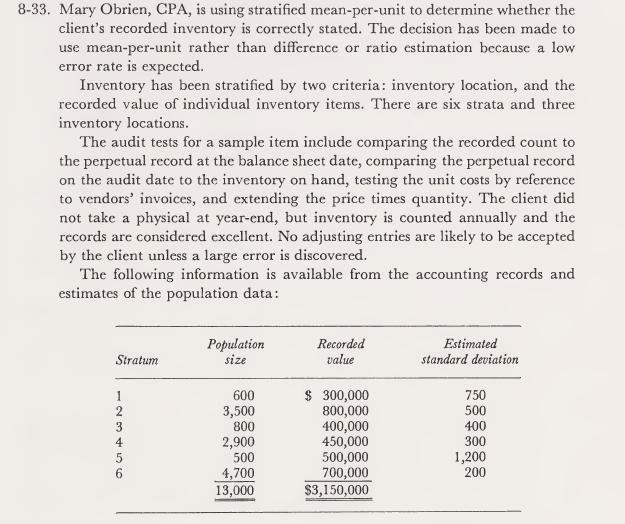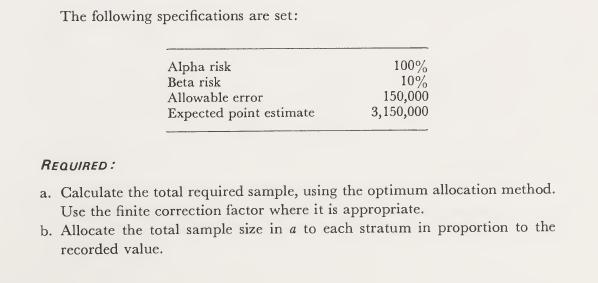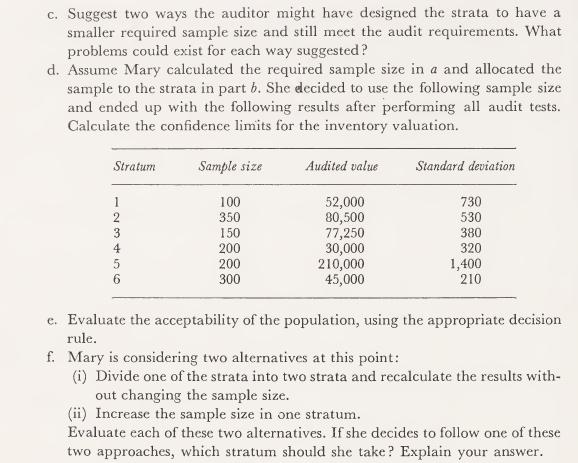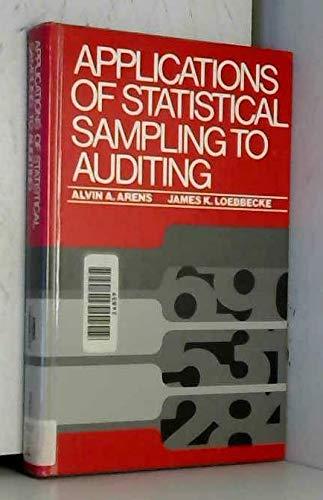Question:
Refer to problem 8-33, concerning the audit of inventory. Mary now decides to use dollar unit sampling rather than mean-per-unit.
Required :
a. Would it be acceptable to use dollar unit difference estimation in this situation ? Explain your answer.
b. Calculate the required sample size using simple attributes at the 90% confidence level. Compare your answer to part a in problem 8-33.
c. Under what circumstances will the auditor conclude that the population is acceptable if the sample size selected using dollar unit sampling is the same as the one calculated in part b ?
d. What options does the auditor have if several errors are found in the sample using dollar unit sampling?
Problem 8-33:



Transcribed Image Text:
8-33. Mary Obrien, CPA, is using stratified mean-per-unit to determine whether the client's recorded inventory is correctly stated. The decision has been made to use mean-per-unit rather than difference or ratio estimation because a low error rate is expected. Inventory has been stratified by two criteria: inventory location, and the recorded value of individual inventory items. There are six strata and three inventory locations. The audit tests for a sample item include comparing the recorded count to the perpetual record at the balance sheet date, comparing the perpetual record on the audit date to the inventory on hand, testing the unit costs by reference to vendors' invoices, and extending the price times quantity. The client did not take a physical at year-end, but inventory is counted annually and the records are considered excellent. No adjusting entries are likely to be accepted by the client unless a large error is discovered. The following information is available from the accounting records and estimates of the population data: Stratum Population size Recorded value Estimated standard deviation 123456 600 $ 300,000 750 3,500 800,000 500 800 2,900 400,000 400 450,000 300 500 500,000 1,200 4,700 700,000 200 13,000 $3,150,000










